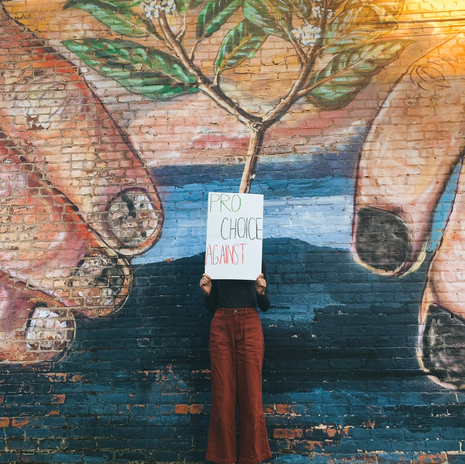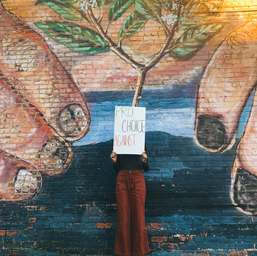The fight for the right to a woman’s own body is no new news. The pro-choice movement marked the beginning of the modern Women’s rights movement. Although the motion was legalised in many countries before the Victorian era, many nations reversed law in the mid-nineteenth century and illegalised abortion. Its history and legalisation are dynamic, not static — it changes repeatedly. Therefore, every single milestone is a cause for celebration and an opportunity for reflection.
ARGENTINA, AND MORE OF SOUTH AMERICA
Argentina legalised terminating a pregnancy within the first 14 weeks and called for better healthcare for pregnant women in 2020. To understand the significance of Argentina’s decisions globally, it’s essential to look at the history of women’s social justice in Argentina. First of all, Argentina is one of the world’s largest Catholic countries and used to have one of the most restrictive abortion laws before 2020. Before this bill, women and girls alike, especially those from economically and socially disadvantaged circumstances, were forced to turn to illegal and unsafe procedures. The new law changes the entire continent’s trajectory regarding its women’s rights movement, which is still in its grassroots stages. Moreover, it sets a precedent for other Catholic nations on and off the continent. Countries like Nicaragua, El Salvador, Suriname, and Honduras still prohibit abortion in all cases. With the monumental change in Argentina regarding abortion, these nations might also change their laws favouring the abortion rights movement benefitting many women in the continent.
ICELAND
Although other countries like Nicaragua, El Salvador, Suriname, and Honduras still heavily regulate abortion, there are also countries that have progressed beyond that notion. For example, albeit moving back and forth on the issue, Iceland has finally reached a place in its legalisation where it is possible for a woman to attend the procedure but is at the same time thoroughly regulated. It was one of the first western countries to legalise abortions in domestic conditions in the 1930s and is now one of the few countries that permit abortions until the 22nd week of pregnancy.
THE UNITED MEXICAN STATES
Iceland was the first Western country to legalise abortion. Historically, countries like Mexico technically legalised abortion even before them, although only permitting it in cases of rape, fetal impairment, and other exceptional terms. However, the constant back and forth between the progression and regression of the abortion laws left the women’s rights activists in a perpetual battle to legalise abortion. The United Mexican States operate under a federal system, which means that each state can form state laws on anything not legislated by central laws that apply to the entire nation. Therefore, through the years, abortion laws have been in fluctuation, where some states make it available only to victims of rape, while some are only allowing the procedure when the mother’s life is at risk. In 2007, Mexico City went ahead and legalised abortions till the 12th week of pregnancy, which caused many other states to reactively make laws that gave personhood to the fetus from the moment of conception. This caused an unwanted ripple in abortion laws and made it difficult for women to obtain safe procedures legally.
BACK AND FORTH – THE SOVIET UNION
Similarly, the Soviet Union’s abortion laws legalised the procedure years before Iceland and Mexico. At that time, all abortions were permitted as per the woman’s request at any time of the pregnancy. Feminist Alexandra Kollantai spurred the feminist movement that made it possible for this to be the case. Unfortunately, with the new government’s regime, abortion was strictly restricted and is now again available to women on request as long as it is within the first 12 weeks of the pregnancy since 2011.
NEW YORK, NEW YORK
New York legalised abortions in 1970. Being one of the most restrictive states in the past, which only allowed for abortions when necessary to save a mother’s life, New York became an inspiration for the movement. Further, Roe V. Wade (state) became a historical case for the United States, establishing a constitutional right to abortion on request under the 14th amendment of the constitution with the right to privacy in 1973. Under the alias “Jane Roe”, Norma McCorvey challenged anti-abortion laws with the help of Texas attorneys Linda Coffee and Sarah Weddington in the reasoning of her unstable financial circumstances and her past, having already given up two babies from her past pregnancies. This Supreme Court case is known to be the case to legalise abortions throughout the nation as the US Supreme Court struck down a Texas law banning abortion, weakening anti-abortion laws through many states. But because the United States is set up similarly to the United Mexican States, where laws vary depending on the state, many states have highly varying gestational periods within which they allow abortion procedures. Some states have gone as far as significantly restricting access to abortions even after Roe V. Wade’s ruling. Besides, the continually changing Supreme Court justices in the nation hail a call for worry for many women’s rights activists. Recent times have shifted towards a more conservative outlook on abortions and restrictions with a more right-leaning justice system. This just provides more reason for activists to raise their voices in concern and fight.
INDIA – AN UPWARD CLIMB
In India, the story deems differently with a history and present that has and continues to have women’s rights activists fight for what they believe is a human right. To get a quick look at what abortion looked like in the eyes of society and the court, it’s essential to know about Section 312 of The Indian Penal Code. It states that —
“Whoever voluntarily causes a woman with child to miscarry, shall, if such miscarriage be not caused in good faith for the purpose of saving the life of the woman, be punished with imprisonment of either description for a term which may extend to three years, or with fine, or with both; and, if the woman is quick with child, shall be punished with imprisonment of either description for a term which may extend to seven years, and shall also be liable to fine.”
This suggests that anyone performing or getting an abortion that is not performing the procedure to save the mother’s life is viable to be criminally charged. In 1971, The Medical Termination of Pregnancy Act was passed. This document applied to all of India, excluding Jammu and Kashmir, and made abortions legal until the 20th week as long as the listed conditions applied to the situation, such as rape, fetal impairment, and maternal mortality etc. Later in 2002, The MTP Act was amended, allowing safer implementation and better access to abortion clinics, allowing legal abortions to occur on broad social or economic grounds. In March of 2020, the government amended the MTP and legalised abortion procedures up to the 24th week as long as the Medical Board and doctors administer them. Although India has legalised abortion to some extent, social stigma around the topic is still very prevalent, and activists and women continue to fight against it.
THE FUTURE IS PROGRESSIVE
This doesn’t mean that progress has halted, as many countries worldwide are treading in a direction that allows for safe access to abortions. Most countries in Europe have legalised abortions on request or broad social and economic grounds. For example, the Netherlands allows abortion till the 24th week, Sweden till the 18th, and France till the 14th. Those with lower gestational limits allow for broad exceptions after the limit has expired, thus permitting abortion access later in pregnancy. On the same trend, Canada allows abortions without a gestational limitation. Supplementarily, international human rights now consider access to safe and legal abortion central to women’s autonomy and reproductive health, which means that countries have to look at the legalisation of abortion from a public health perspective regardless of political pressure and political ideology. To aid, the UN has stated that abortion is legal under domestic law; it must be available, accessible (including affordable), acceptable, and of good quality. Therefore, even though the movement might be a pendulum at the moment, it will eventually reach a promising and sustainable destination in favour of the people that the law affects.
Moreover, the women’s rights movement around the world remains strong and is nowhere near an end. More than ever, women worldwide understand what it means to be a woman, and in this age and time, they are dissatisfied with the current societal and legal laws and are actively fighting for their rights.


